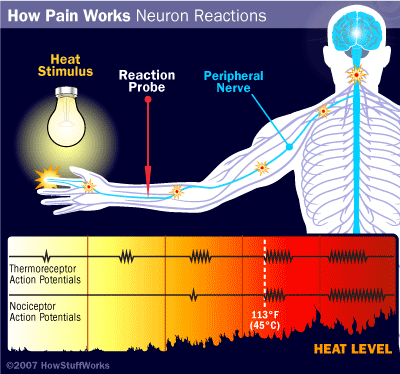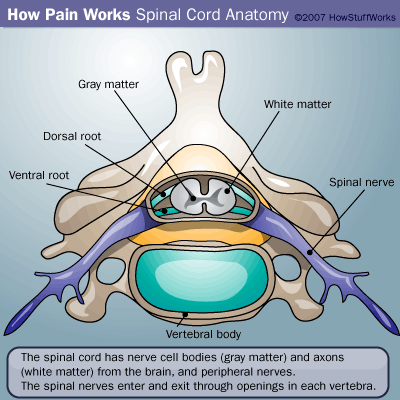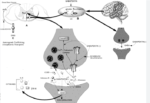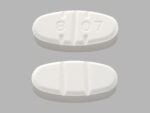Like normal sensory neurons, nociceptor neurons travel in peripheral sensory nerves. Theircell bodies lie in the dorsal root ganglia of peripheral nerves just inside the spine. As we mentioned, nociceptors sense pain through free nerve endings rather than specialized endings such as those in neurons that sense touch or pressure. However, while normal sensory neurons are myelinated (insulated) and conduct quickly, nociceptor neurons are lightly or non-myelinated and slower. We can divide nociceptors into three classes:
- A δ mechanosensitive receptors — lightly myelinated, faster conducting neurons that respond to mechanical stimuli (pressure, touch)
- A δ mechanothermal receptors — lightly myelinated, faster conducting neurons that respond to mechanical stimuli (pressure, touch) and to heat
- Polymodal nociceptors (C fibers) — unmyelinated, slowly conducting neurons that respond to a variety of stimuli.
Suppose you cut your hand. Several factors contribute to the reception of pain:
- Mechanical stimulation from the sharp object
- Potassium released from the insides of the damaged cells
- Prostaglandins, histamines and bradykinin from immune cells that invade the area during inflammation
- Substance P from nearby nerve fibers
These substances cause action potentials in the nociceptor neurons.
The first thing you may feel when you cut your hand is an intense pain at the moment of the injury. The signal for this pain is conducted rapidly by the A δ-type nociceptors. The pain is followed by a slower, prolonged, dull ache, which is conducted by the slower C-fibers. Using chemical anesthetics, scientists can block one type of neuron and separate the two types of pain.

Pain Signal Transmission
The signals from your cut hand travel into the spinal cord through the dorsal roots. There, they make synapses on neurons within the dorsal horn (the top half of the butterfly-shaped gray matter). They synapse on neurons within the spinal cord segment that they entered and also on neurons one to two segments above and below their segment of entry. These multiple connections relate to a broad area of the body — this explains why it’s sometimes difficult to determine the exact location of pain, especially internal pain.
The secondary neurons send their signals upward through an area of the spinal cord’s white matter called the spinothalamic tract. This area is like a superhighway where traffic from all of the lower segments rides up the spinal cord. The signals of the spinothalamic tract travel up the spinal cord through the medulla (brain stem) and synapse on neurons in the thalamus, the brain’s relay center. Some neurons also synapse in the medulla’s reticular formation, which controls physical behaviors.
Nerves from the thalamus then relay the signal to various areas of the brain’s somatosensory cortex — there is no single pain center in the brain.
Pain signals travel along pathways through the body. On the next page we’ll learn about them.

Pain Medications, Pain Relief, and Pain Management




